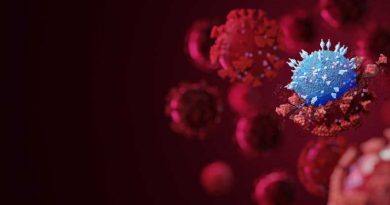Declining eyesight: 3 minutes of simple practice can lead to ‘significant improvement
The state of Britain's eyesight
We use your sign-up to provide content in ways you’ve consented to and to improve our understanding of you. This may include adverts from us and 3rd parties based on our understanding. You can unsubscribe at any time. More info
From ageing to genetics, there are various factors at play when it comes to your sight. Luckily, new research has found that taking three minutes out of your morning to do just one thing could improve declining eyesight.
The new study by University College London has discovered that exposure to deep red light can really improve your declining eyesight.
The study reports that three minutes in the morning, once a week, is all it takes.
The research published in Scientific Reports has built on previous work, suggesting that three minutes of exposure to longwave deep red light daily can give naturally declining vision a boost.
This previous research studied the effects of switching the light on energy-producing mitochondria cells in the retina.

Now, this new work has focused on a single session effect as well as using lower energy levels.
The team has also compared the red-light exposure throughout different parts of the day.
The findings suggest that the use of 670 nanometre deep red light for three minutes leads to a 17 percent improvement in colour contrast vision on average.
The effects of just a one-time exposure lasted for at least a week.
However, there’s a catch. The study found that this improvement was only visible when participants used the light in the morning.
When the researchers did the same test in the afternoon, there was no improvement.
The research team says that these “breakthrough” findings could lead to affordable eye therapies done from the comfort of your home.
Lead author, Professor Glen Jeffery said: “We demonstrate that one single exposure to long wave deep red light in the morning can significantly improve declining vision.

“Which is a major health and wellbeing issue, affecting millions of people globally.”
Why does eyesight decline?
As with everything in our bodies, the answer seems to be simple – ageing.
The research reports that around the time of 40 years old, the cell in the retina begin to age.
This happens when the cell’s mitochondria also start to decline.
The cell’s mitochondria produce energy, known as ATP, and boost cell function.

Professor Jeffrey said: “Mitochondria have specific sensitivities to long wavelength light influencing their performance.
“Longer wavelengths spanning 650 to 900 nanometre improve mitochondrial performance to increase energy production.”
There are some red-light therapies for at home use available already, but the specific nanometre frequency found to improve eyesight at a budget is still being developed.
However, the study might need to be taken with a pinch of salt. Although the use of red light led to positive effects, the extent of improvement can differ between those of similar ages.
The study reports that it’s possible that there are other variables between individuals that impact the degree of improvement that the research has not identified so far.
Source: Read Full Article



